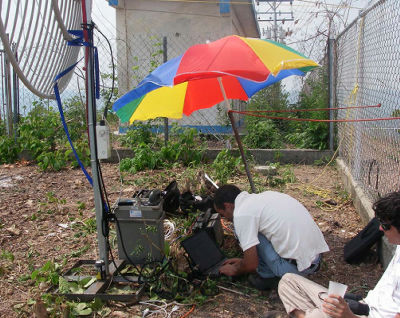What is the reason for the big leap in the 'Loon' project from Google, which provides the Internet with hot air balloons all over the world?

There are many places in the world where you can not connect to the Internet, and SpaceX will launch an artificial satellite with the '
Autonomous navigation of stratospheric balloons using reinforcement learning | Nature
https://www.nature.com/articles/s41586-020-2939-8
Drifting Efficiently Through the Stratosphere Using Deep Reinforcement Learning | by Salvatore Candido | Loon Blog | Dec, 2020 | Medium
https://medium.com/loon-for-all/drifting-efficiently-through-the-stratosphere-using-deep-reinforcement-learning-c38723ee2e90
Google has been trying to provide an Internet environment by flying hot air balloons since 2015, but hot air balloons are liable to change course due to the influence of climate change and rugged terrain, and it is constant from the base station on the ground. It was extremely difficult to keep the hot air balloon flying within the distance of.

Therefore, Loon's development team developed an algorithm called 'Station Seeker' that helps keep the balloon's path constant. The team taught the flight control system how to operate a hot air balloon using simulation.
StationSeeker uses deep reinforcement learning, but 'initially, we didn't know if deep reinforcement learning could be used at a practical level for high-altitude platforms that autonomously drift in the stratosphere over a long period of time,' Loon said. Said Sal Candido, Chief Technology Officer. Reinforcement learning is a method of letting a computer learn through trial and error, and Loon focuses on the part of 'what kind of decision making'.
After repeated experiments, it was found that StationSeeker can correctly predict the wind speed and direction at various altitudes, and can adjust the altitude of the balloon according to the prediction.

'It's really hard to keep a network of hot air balloons above people who need the Internet. Reinforcement learning is about'what the balloon is like'and'how much energy it takes to stay.' 'What is the best choice a hot air balloon makes for someone with a mobile phone in their hands?' Candido commented.
In order to send and receive reliable signals, the hot air balloon must stay within 30 miles (about 48 km) from the base station on the ground, but with the new algorithm, the hot air balloon stays connected longer than before and is correct. It is now possible to return to the coordinates.
In October 2020, Loon made a record 312 days of continuous flight, thanks to Station Seeker.
'Loon', a balloon-flying project that provides an internet environment everywhere, sets a new record in 312 days of continuous flight --GIGAZINE

In the past, Loon's team had manually designed the algorithm, but StationSeeker outperforms it, Candido said. StationSeeker is the first commercial aerospace system of this type to be deployed, and 'reinforcement learning is useful for controlling complex real-world systems with continuous and dynamic activities. It is believed to be evidence of. '
Related Posts:
in Hardware, Posted by darkhorse_log






